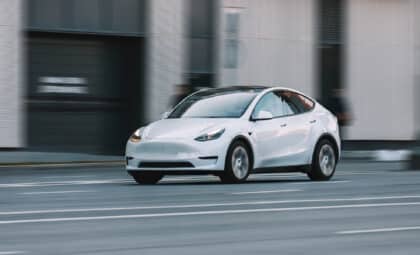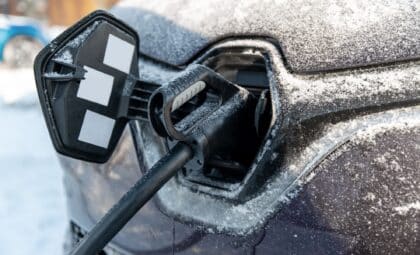After years of bold commitments from major carmakers, Volvo’s revised strategy marks a notable recalibration. Once positioned as a frontrunner in the race to phase out combustion engines, the Geely-owned brand is now extending the timeline. The company still supports electrification but is adjusting to market conditions that have undercut earlier optimism.
Volvo had already softened its position in 2024, moving from a full-electric target to a goal of having 90 to 100 percent of its lineup consist of either electric or plug-in hybrid vehicles by 2030. That pivot has now widened, with the company confirming internal combustion engines will stick around into the next decade.
EV and Hybrid Sales Fall Short of Targets
Volvo’s decision is grounded in its recent sales data, which paints a difficult picture for the brand’s electrification strategy. Through September 2025, plug-in hybrids and battery-electric vehicles made up only 44.2 percent of total deliveries. Fully electric sales fell by 21 percent compared to the same period in 2024, while plug-in hybrids dropped by 1 percent.
Speaking to Automotive News Europe, Volvo CEO Håkan Samuelsson acknowledged the slowdown and hinted at the need for realism: “We need a second generation of plug-in hybrids that will last us until the end of the 2030s. We cannot dictate that [end of combustion engines].” Despite predicting that the industry will be “electric in about 10 years,” Samuelsson made clear that combustion technology still has a role to play in Volvo’s mid-term plans.

Next-Gen Hybrids to Lead Transition
The company is now banking on hybrids—particularly extended-range electric vehicles (EREVs)—to carry its product line through the next phase. Unlike traditional plug-in hybrids, EREVs use a gas engine solely to charge the battery, not to drive the wheels. Samuelsson described these models as “more of an electric car with a backup engine,” framing them as a second-generation hybrid platform.
Among the key vehicles in this shift is the upcoming XC70, confirmed for Europe and already in the pipeline for China. While not expected to reach Europe before 2027, the SUV will feature a 39.6-kWh battery capable of delivering up to 112 miles of electric range—though that estimate is based on the Chinese CLTC cycle and likely to be lower under European WLTP or U.S. EPA standards.
Also in development is a replacement for the aging XC90, which received its last facelift in 2024. The new version, expected around 2028, will be offered as an EREV with approximately 100 miles of battery range. These models aim to ease range anxiety while avoiding the need for large, costly battery packs.
Regulations and Software Slow Down Rollout
While the roadmap is clear, implementing it will take time. According to Motor1, the rollout of new hybrid models is being delayed by regulatory and technical challenges. Bringing vehicles like the XC70 to European markets involves adapting to regional emissions rules, meeting evolving safety standards, and integrating digital systems such as Google’s Android Automotive platform.
This technical complexity means that Volvo’s shift to EREVs and advanced PHEVs won’t be immediate. Still, the company remains committed to dropping diesel engines, which it discontinued last year, while continuing to refine its gasoline offerings for use in hybrid applications. These transitional technologies will be essential to Volvo’s lineup for at least the next 15 years.









